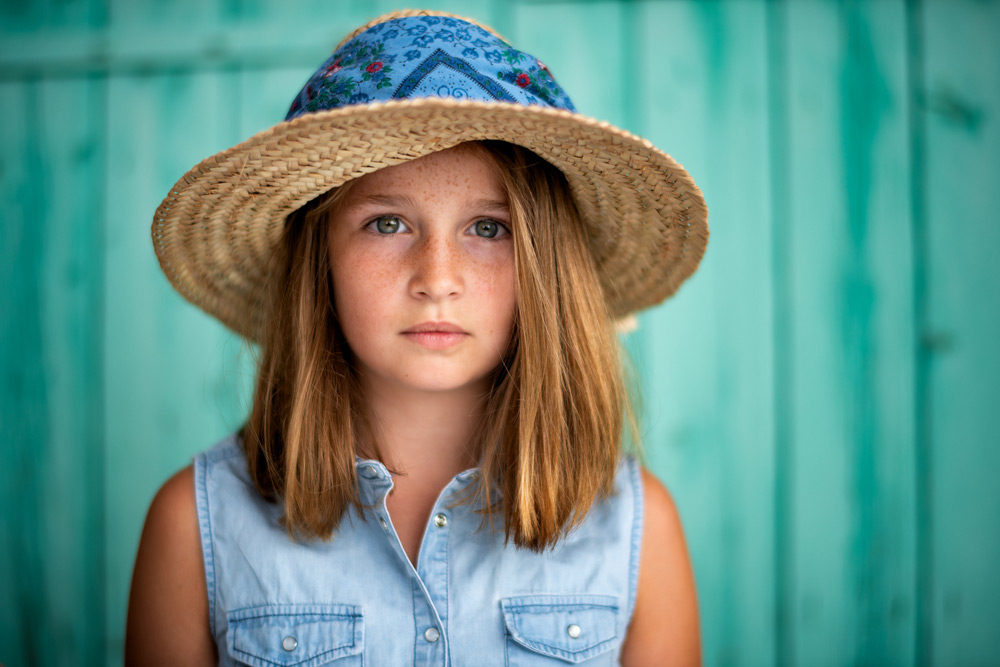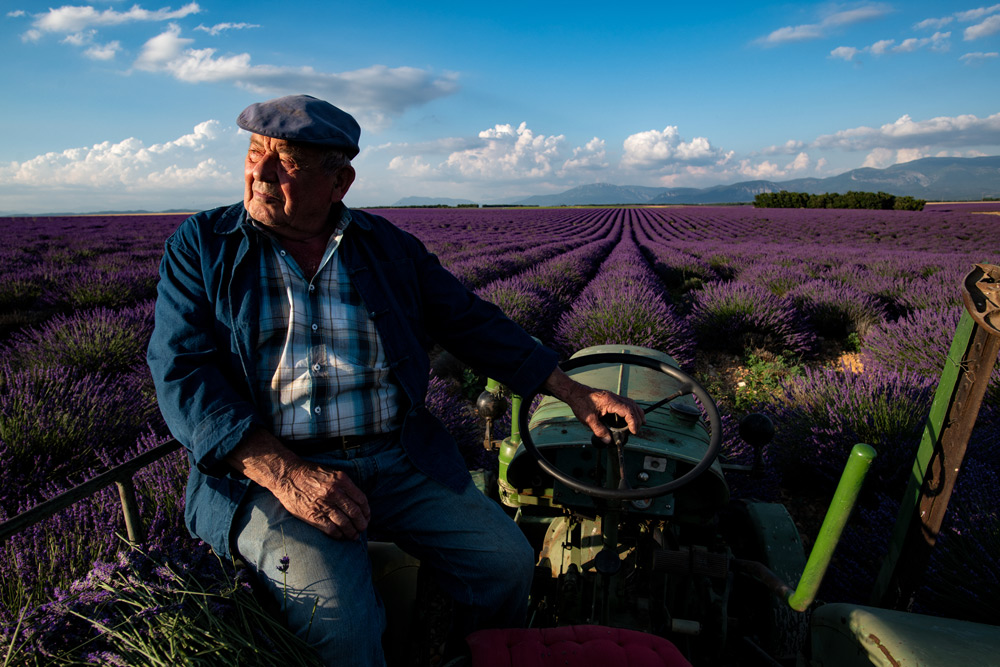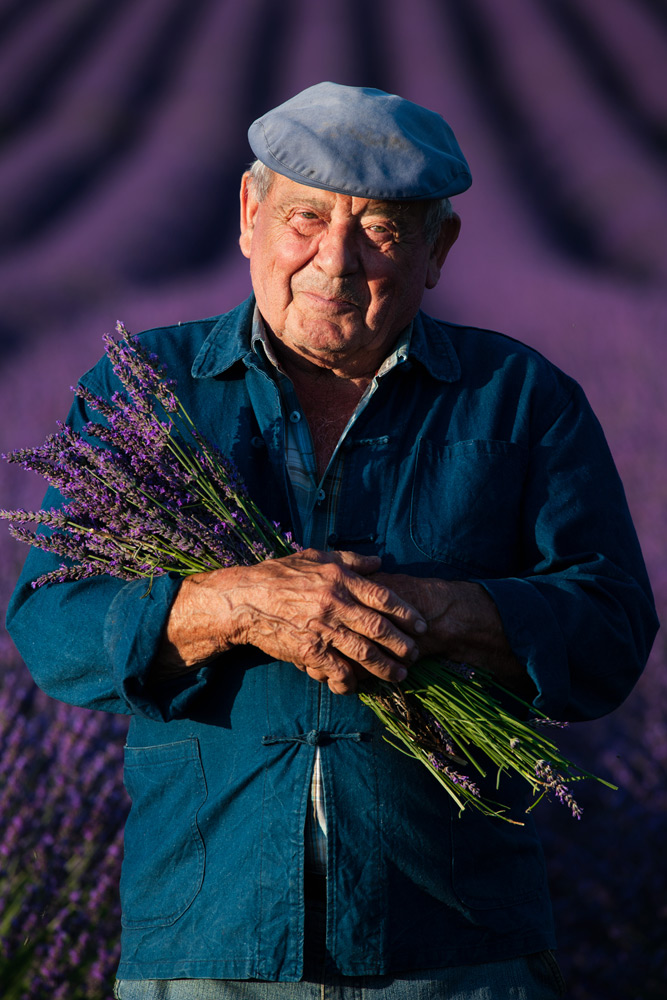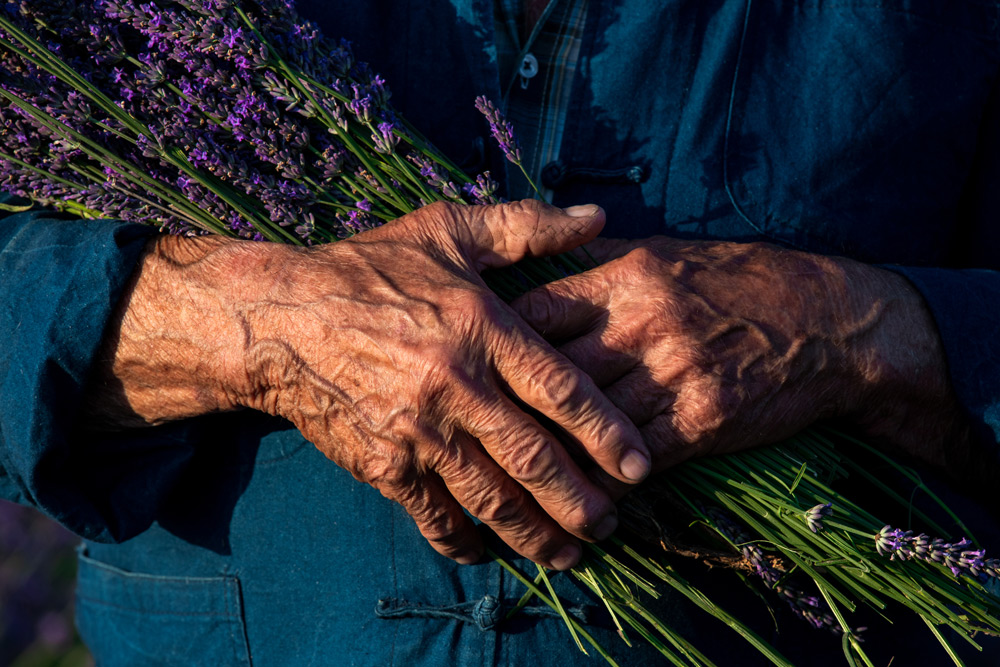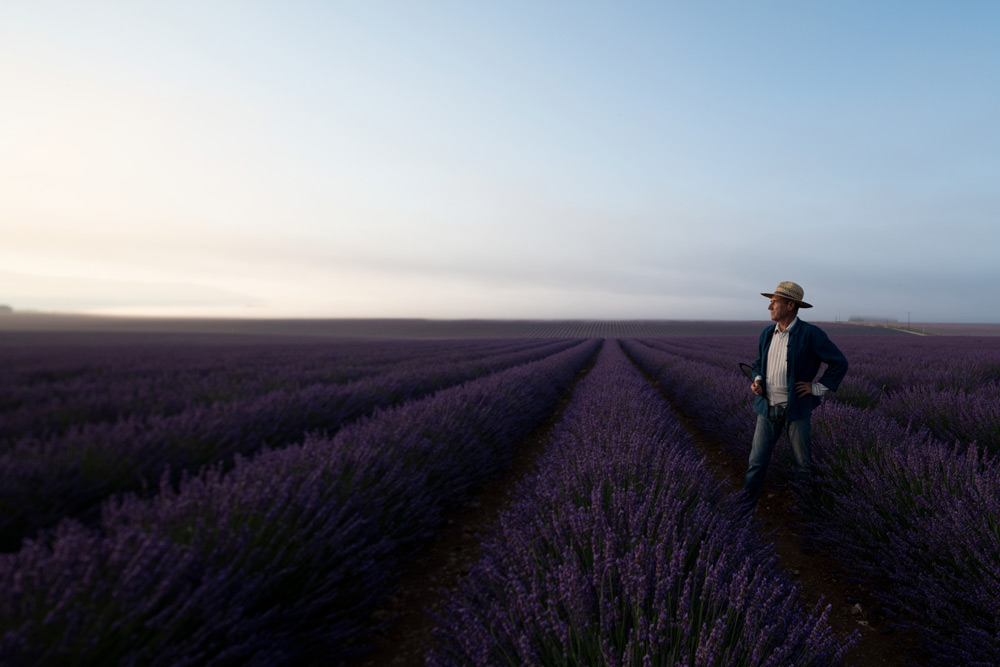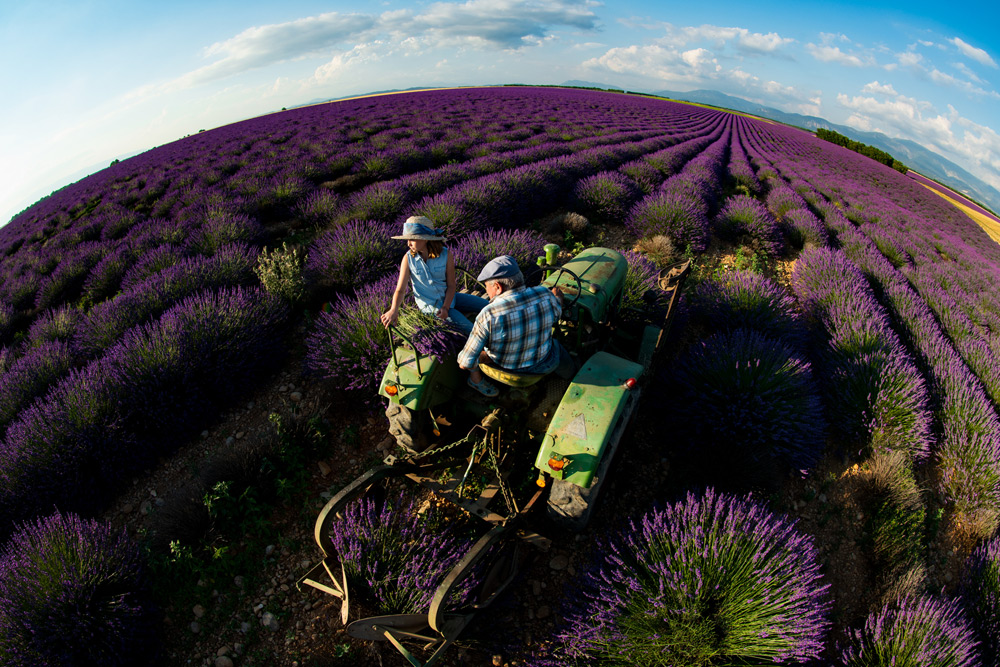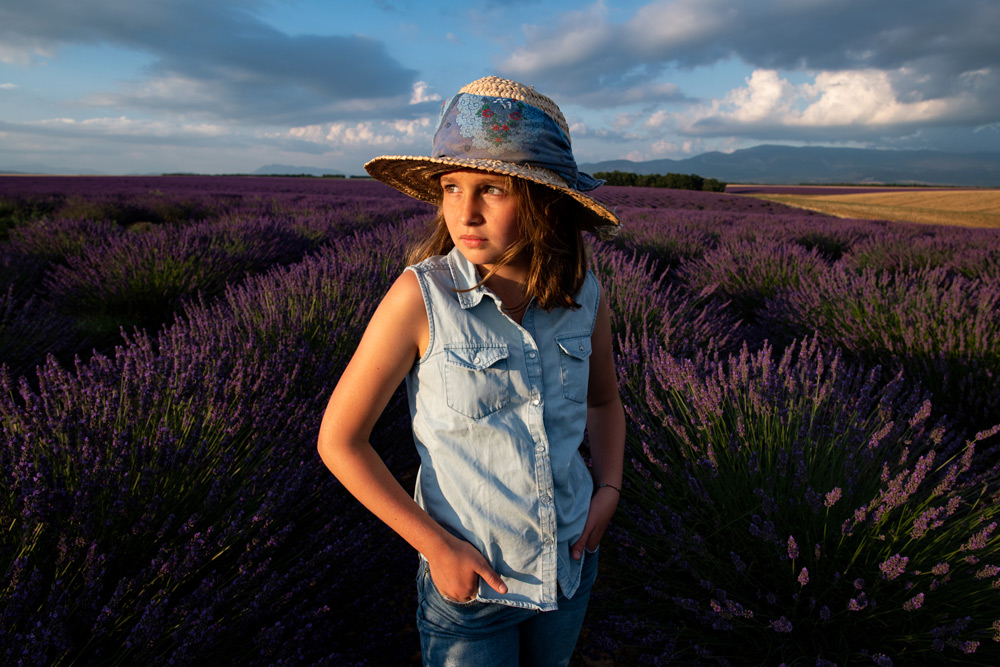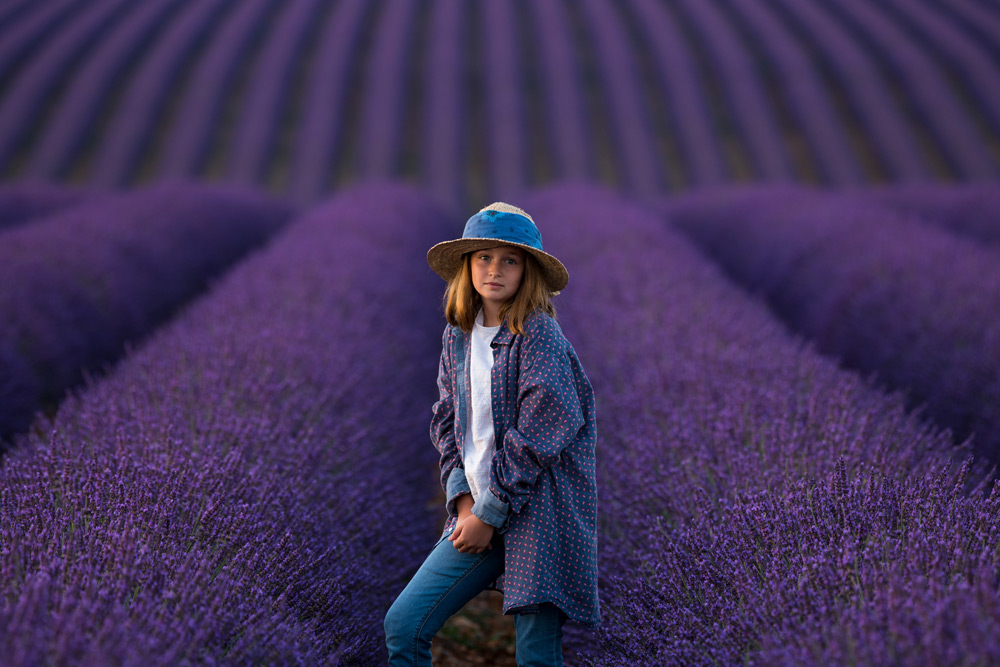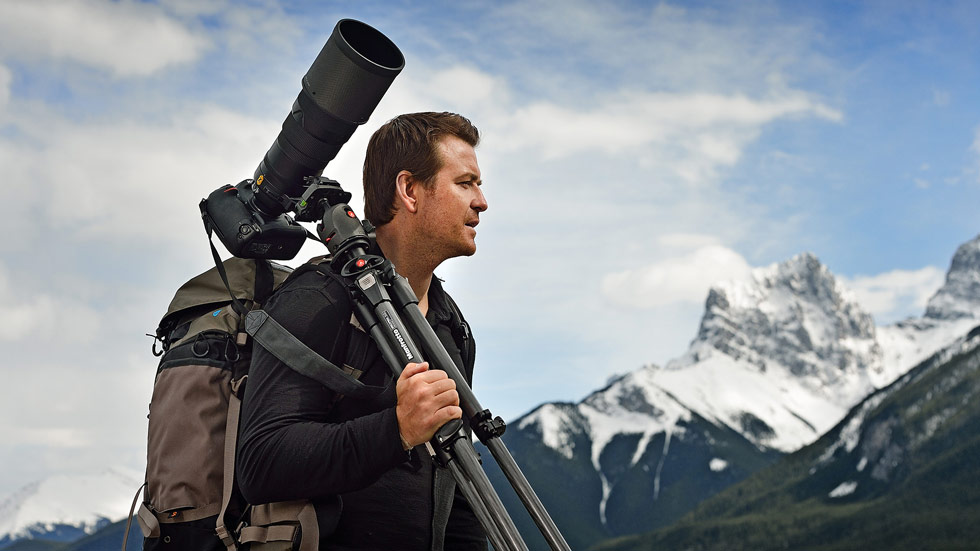Extreme Glass: Six Super Lenses To Spark Storytelling Images
Joe shot this image with the 58mm f/1.4G wide open to isolate his subject against the soft, complementary background of a set of discarded shutters leaned against a building. "I was after critical focus," he says, "but in a limited way—just to the subject." Mid-afternoon clouds provided even, soft lighting. D850, AF-S NIKKOR 58mm f/1.4G, 1/2500 second, f/1.4, ISO 100, aperture priority exposure, Matrix metering.
Not long ago Nikon Ambassador Joe McNally brought to a familiar photo destination—the lush lavender fields of Provence in the South of France—a selection of NIKKOR lenses that while not unfamiliar to him, weren't on his list of desert-island glass or workhorse lenses. He called them "extreme glass"—NIKKORS to be used to add elements of the exotic, the unexpected, the dramatic and the interpretive to his storytelling images.
The idea was to see what these lenses would reveal and inspire, and what he could create when he reached beyond the comfort zone.
This time an off-center composition for an afternoon image with the 20mm wide-angle. "Working with this wide a view, I was careful with the horizon line, not dipping it or angling it to overplay the wide-angle hand." And with a lens that sees so much, he's careful to watch all the details of the composition to be sure there are no surprises. "You gotta look around," is how Joe puts it. D850, AF-S NIKKOR 20mm f/1.8G ED, 1/250 second, f/8, ISO 100, aperture priority exposure, Matrix metering.
The lenses, with notes on their signature attributes, were:
• AF-S Fisheye NIKKOR 8-15mm f/3.5-4.5E ED. The classic circular fisheye perspective at 8mm; curvature-of-the-earth drama at 15mm.
• PC NIKKOR 19mm f/4E ED. Tilt and shift capability to help photographers control—or experiment with—what's in focus in an image, as well as keep parallel lines parallel.
• AF-S NIKKOR 20mm f/1.8G ED. An ultra-wide "sees all" lens with a 94-degree angle of view on FX format Nikon DSLRs, a 70-degree angle on DX DSLRs.
• AF-S NIKKOR 58mm f/1.4G. A low-light lens with maximum versatility, close-focusing and the capability of producing beautiful bokeh backgrounds.
• AF-S NIKKOR 300mm f/4E PF ED VR. Ultra-lightweight, compact and versatile; known for its superior optical performance.
• AF-S NIKKOR 200-500mm f/5.6E ED VR. A compact super telephoto with superb VR image stabilization and ultra-sharp performance.
"He's the owner of the lavender fields where we shot," Joe says. "The 300mm f/4 gave me the compression I wanted to bring the field 'up close' to him, but its light weight was a big factor as I was able to hand hold it—and that's important when you're shooting real people rather than models." The soft light of late afternoon was perfect for the overall effect of the velvet curtain look of the background. D850, AF-S NIKKOR 300mm f/4E PF ED VR, 1/200 second, f/6.3, ISO 100, aperture priority exposure, Matrix metering.
Same subject, same lens as the previous photo, as Joe moved up to show that the 300mm tele could handle both an environmental portrait and a detail shot. "Storytelling at its best," he says. D850, AF-S NIKKOR 300mm f/4E PF ED VR, 1/320 second, f/9, ISO 250, aperture priority exposure, Matrix metering.
The Stories They Can Tell
For Joe, the timing was right for a visit to one of the world's most photogenic locales. "I had a couple of workshops in the South of France," he says, "and that meant a chance to go to the lavender fields of Provence when the lavender was in full bloom—and you don't pass up a chance like that."
What he did was mount a small production—small in comparison to the sizable, imaginative productions Joe is generally known for—with a few local residents and a carefully cast central subject in the colorful settings of the lavender fields.
"He's the local lavender expert," Joe says. "He knows everybody in the valley, has worked with lavender his whole life and was there to introduce us to people. He had a great face for a picture." Joe took this image in early morning fog using the selective focus capability of the PC 19mm tilt/shift lens. "Critical sharpness on him was important, and I was playing with the rest of the perspective to affect the sharpness of the rows of lavender." D850, PC NIKKOR 19mm f/4E ED, 1/80 second, f/16, ISO 400, manual exposure, Matrix metering.
Most of the time I could go out with a 24-70mm and a 70-200mm and that's what I'd spend my day with. Here I was after the variety of perspectives these particular lenses would give me.
The AF-S Fisheye NIKKOR 8-15mm f/3.5-4.5E ED at its 15mm focal length captures an image symbolic of generations bound up and bordered by the lavender fields. "We found the old-looking tractor for this shot," Joe says. His vantage point was the front end of a back hoe. "I got into the loader and they hoisted me up." D850, AF-S Fisheye NIKKOR 8-15mm f/3.5-4.5E ED, 1/250 second, f/8, ISO 200, aperture priority exposure, Matrix metering.
The six lenses were to play storytelling roles. "Changing the lens means you're changing your perspective," Joe says, "and that's essential to the power of storytelling."
Recalling his origin as a newspaper photographer, Joe cites "the old mantra of news photography: show 'entire' to 'detail.' It's not enough to show just the trombone player—you need the general view to show how big the entire parade was."
The Provence project proved the point that for the aspiring enthusiast as well as the creative pro, lenses serve a dual purpose: they capture the photographer's ideas and they suggest ideas of their own. For example, a telephoto suggests image compression; a PC (perspective control) offers selective focus.
Now, what do you do with those ideas?
"Most of the time I could go out with a 24-70mm and a 70-200mm and that's what I'd spend my day with," Joe says. "Here I was after the variety of perspectives these particular lenses would give me."
There was also the goal of changing things up, of challenging himself to come up with some new looks to his photos as well as using the lenses to influence and direct viewers' attention to the elements he wanted to emphasize.
Simply put, these pictures, and these lenses, tell stories of inspiration, challenge and achievement.
Take a good look.

